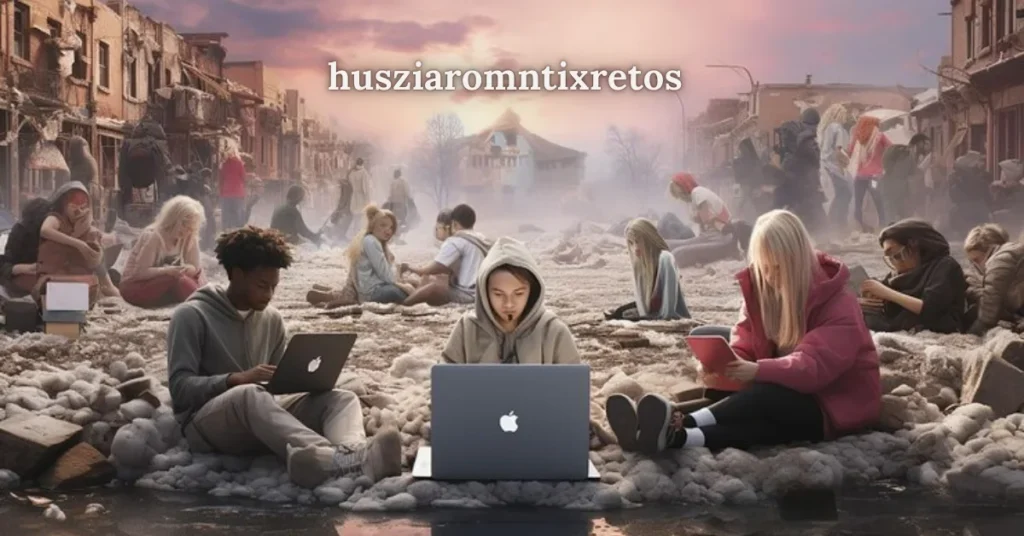Introduction
Ever stumbled upon a word so mesmerizing you couldn’t help but want to dig into its soul? That’s Husziaromntixretos for you. Mysterious, multilayered, and dripping with cultural weight, it’s more than just a mouthful—it’s a key to unlocking generations of stories, rituals, and vibrant artistic traditions.
So what is Husziaromntixretos? Let’s dive in, sip something warm, and unpack its magic.
What is Husziaromntixretos?
It’s not just a concept—it’s a living tradition.
Husziaromntixretos is a cultural phenomenon that blends mythology, ritual, symbolic art, and social values. While its exact origin remains debated, its impact on cultural identity is undeniable. Think of it like a tapestry: rich with colors, patterns, and interwoven stories handed down through generations.
Whether it’s a festival, an art style, or a way of thinking—it lives in the hearts of the people who celebrate it.
Historical Background of Husziaromntixretos
Origins and Etymology
The term itself is believed to be a hybrid of ancient dialects. Linguists suggest a combination of proto-European root words signifying “rebirth,” “unity,” and “myth.” Oral traditions link it to early agrarian societies who celebrated seasonal cycles and spiritual renewal.
Evolution Through the Ages
At first, Husziaromntixretos was an agrarian celebration—marking planting or harvest seasons. Over centuries, it absorbed myths, regional folklore, religious symbols, and transformed into something much larger: a cultural compass.
Key Historical Milestones
- Prehistoric roots in fertility rites
- Medieval period saw integration with local religions
- 19th century revival as nationalism grew
- Modern era adopted in arts, festivals, and academia
Symbolism and Deeper Meanings
Spiritual and Philosophical Layers
The essence of Husziaromntixretos lies in duality and transformation. Life and death. Darkness and light. Every ritual reflects this balance.
Symbols in Folk Art and Myth
The sun and moon, spirals, mirrored animals, and interwoven vines are common motifs. Each carries weight—life, growth, renewal, and ancestral protection.
Artistic Representations
Traditional Art Forms
Murals, Weavings, and Iconography
These often feature bold colors, natural materials, and symmetrical designs. They’re not just pretty—they’re storyboards of heritage.
Contemporary Reimaginings
Digital Art, Film, and Performance
Modern creators are remixing the old with the new—think projection mapping rituals, animated folklore series, and interactive installations.
Ceremonial and Ritual Practices
Ancient Ceremonial Roles
Traditional ceremonies were led by ritual elders or “keepers of memory.” Think fire circles, dance trances, and nature offerings.
Festival Celebrations
These are communal, joyous, and often involve:
- Singing and chanting
- Communal feasts
- Ritual dances in circular formations
Modern Adaptations
In cities, they’ve evolved into cultural expos and pop-up installations—accessible yet respectful to their roots.
Music, Dance, and Oral Tradition
Folk Instruments and Songs
Old instruments like string drums, reed flutes, and chant bowls were used. Songs often carried coded messages passed on orally.
Storytelling and Dance Rituals
Each dance move had meaning—rituals acted as moving stories, narrating mythical tales.
Folklore and Mythology
Iconic Legends
One recurring legend is “The Flame Within,” a tale of a child born during a solar eclipse destined to bring unity. Sounds epic, right?
Archetypes and Mythical Characters
From spirit guardians to trickster beings, Husziaromntixretos mythology reflects human emotion, nature, and divine mystery.
Community and Cultural Identity
Communal Gatherings
More than just events—they’re living classrooms where kids learn values, songs, and stories.
Family Traditions
Families create home altars, cook ancestral dishes, and practice daily micro-rituals that keep the culture alive.
Societal Norms Rooted in Husziaromntixretos
Respect for nature, elder wisdom, and communal harmony are core tenets passed down.
Globalization and Cultural Exchange
International Recognition
From being featured at UNESCO cultural summits to appearing in global festivals, Husziaromntixretos is gaining attention.
Influence on Other Cultures
Similar themes of rebirth, harmony, and ancestral reverence are now being echoed in fusion festivals across Europe and the Americas.
Revival and Preservation Efforts
Local Activism
Youth are taking charge—hosting Husziaromntixretos workshops, making documentaries, and archiving stories online.
Institutional and Academic Support
Universities now offer Husziaromntixretos studies, and museums feature rotating exhibitions.
Criticisms and Controversies
Cultural Appropriation Concerns
Some argue that modern versions water down the rituals or commodify the sacred. Fair point. Cultural integrity matters.
Relevance in a Modern Society
Is Husziaromntixretos just nostalgia? Or a much-needed anchor in an increasingly digital world?
The Future of Husziaromntixretos
Digital Revival
From NFT-based ritual art to virtual storytelling platforms—digital natives are breathing fresh life into ancient forms.
Youth Engagement and Education
Interactive apps, gamified learning, and social media challenges are bridging the gap between tradition and trend.
Conclusion
Husziaromntixretos isn’t just a historical relic—it’s a living, breathing mosaic of meaning that continues to evolve. It invites us to reflect, celebrate, and reconnect—with each other and with our roots. Whether you’re drawn by the music, the mythology, or the community, Husziaromntixretos is a cultural gem waiting to be (re)discovered.
FAQs
Is Husziaromntixretos a real culture or symbolic construct?
It’s a symbolic cultural phenomenon rooted in traditions, rituals, and mythology, often interpreted differently by each community that embraces it.
Why is it gaining popularity now?
In a fast-paced world, many are craving connection, depth, and meaning—which Husziaromntixretos offers in abundance.
Can I participate in Husziaromntixretos celebrations?
Yes, but respectfully. Many events are open to outsiders, especially modern adaptations, as long as you’re culturally sensitive.
How can one learn more about it?
Start with books, digital archives, and cultural centers. Some universities even offer electives on the subject.
Is it a religion?
Not exactly—it’s more of a cultural and spiritual framework, often woven into local religions or belief systems but not one itself.






